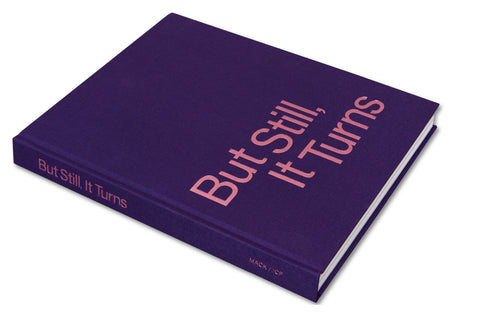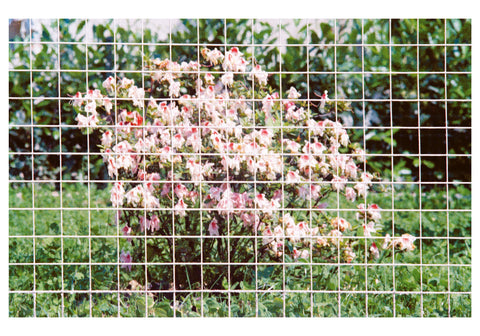 Vanessa Winship’s photographic work from 1999 onwards falls broadly into three overlapping phases of development. The first covers two documentary series she made while travelling around the Balkans and the countries bordering the Black Sea, Imagined States and Desires: A Balkan Journey (1999–2003) and Black Sea: Between Chronicle and Fiction (2002–2006). The second phase can be represented by her portraits of young schoolgirls from Eastern Anatolia in 2007, brought together in the book Sweet Nothings (2008), and by her series Georgia: Seeds Carried by the Wind (2008–2010), both of which evolved from the earlier projects. The third phase encompasses two series, connected, as we have already established, by specific personal experiences: that is, the photographs of Humber (2010), and her collection of photographs from America, she dances on Jackson, made in 2011/12 and published in 2013. And we might also add one further phase to this, one not yet fully determined, that is represented by Winship’s most recent work in progress, And Time Folds (2014–ongoing). The work is significant for registering a new direction: its photographs forming a distinctive break in style and approach from all that has gone before, but returning the photographer with a sense of circularity to the primary questions of family, home and belonging.
Vanessa Winship’s photographic work from 1999 onwards falls broadly into three overlapping phases of development. The first covers two documentary series she made while travelling around the Balkans and the countries bordering the Black Sea, Imagined States and Desires: A Balkan Journey (1999–2003) and Black Sea: Between Chronicle and Fiction (2002–2006). The second phase can be represented by her portraits of young schoolgirls from Eastern Anatolia in 2007, brought together in the book Sweet Nothings (2008), and by her series Georgia: Seeds Carried by the Wind (2008–2010), both of which evolved from the earlier projects. The third phase encompasses two series, connected, as we have already established, by specific personal experiences: that is, the photographs of Humber (2010), and her collection of photographs from America, she dances on Jackson, made in 2011/12 and published in 2013. And we might also add one further phase to this, one not yet fully determined, that is represented by Winship’s most recent work in progress, And Time Folds (2014–ongoing). The work is significant for registering a new direction: its photographs forming a distinctive break in style and approach from all that has gone before, but returning the photographer with a sense of circularity to the primary questions of family, home and belonging.
One of the most obvious distinguishing features of this career narrative is Winship’s consistent preference for working in black and white. On one level this has simply been a matter of taste; a link back, perhaps, to the ‘restrained beauty’ of that near-monochrome Humber landscape. But it has not been a purely aesthetic choice. By using black and white she has been able to consciously abstract reality, ensuring her photography’s detachment from the random atmospheric distractions that colour can bring to the rendering of time and place, and so allowing for a more fluid exchange between past and present. Black and white is indelibly associated in our minds with the documenting of a mid-twentieth century moment, and with its great social upheavals, its conflicts and struggles. Winship’s work invokes that formidable documentary tradition, and the association enriches the suggestion in her photographs of the burden of history pressing on her subjects, on people and the land. And it is largely this sense, this weight, that has given her work its consistently sombre atmosphere.
The narrative of Winship’s work also follows a journey across distinct communities of photographic culture where different values and priorities apply: beginning on the fringes of media-based photojournalism and reportage in her early work, and leading into the realm of photographic art where her photographs have been more widely shown in international museums and galleries. These developments pivot around a critical shift in her practice, when she exchanged her 35mm, mobile observational style for the more formal, procedural approach conditioned by using a 5x4” large format camera and tripod. It was a decision that came to radically alter the tone of her work, not only introducing a new, monumental sense of scale and studied intensity to the photographs, but compelling Winship to negotiate new terms of engagement with her subjects. The slower process of making, as she has said:
‘...forced the situation of an encounter face to face. It was a conscious effort to move away from the position of a passive, silent observer, to one where I had to take more responsibility for my gaze.’
And as this implies, the change of approach was also the point at which portraiture began to assume a prominent place in her work. Made in 2007, Sweet Nothings was the first complete project to represent this emphatic shift, and its publication marked a turning point in Winship’s career, leading to wider recognition for her work, to more awards, and ultimately to other projects and publications. However, in many ways, Winship’s career path has been very singular. It has not followed a recognisable pattern linked to developments in either photojournalism or art photography. In fact, initially at least, her work can be seen as being made against the grain of contemporary practice; as a reaction to the ideas and what she saw as ‘the contrivances’ of post-modernism. But the emergence of her work has coincided with a new interest in documentary within the discourses of art, especially following the presentation of Documenta X, curated by Catherine David in 1997; and it has found its voice against a background of new critical frameworks – opened up in particular by new technology and mass participation in social media – that have helped to give this documentary turn its impetus.
However, in many ways, Winship’s career path has been very singular. It has not followed a recognisable pattern linked to developments in either photojournalism or art photography. In fact, initially at least, her work can be seen as being made against the grain of contemporary practice; as a reaction to the ideas and what she saw as ‘the contrivances’ of post-modernism. But the emergence of her work has coincided with a new interest in documentary within the discourses of art, especially following the presentation of Documenta X, curated by Catherine David in 1997; and it has found its voice against a background of new critical frameworks – opened up in particular by new technology and mass participation in social media – that have helped to give this documentary turn its impetus.

Although the first two phases of Winship’s photography came from a sustained commitment to the countries of the Balkans and the Black Sea, where she lived and worked for almost seven years, the nature of her practice has been essentially itinerant. From 1999 to 2012 she travelled more or less constantly, aiming to understanding her experience and engage with people and places through the act of photographing them, while maintaining that oblique outsider perspective through which the ordinary is often revealed as extraordinary. In working in this way, however, even though her work has derived much of its initial impetus from the example, she has not closely identified with that strong roving tradition of documentary and reportage, exemplified by the essentially ‘diaristic’ photographs of Henri Cartier-Bresson, or the story-telling traditions of the Magnum agency he is so closely associated with. Equipped with a broad awareness of photographic history and theory, and with what is at best an equivocal attitude to the ‘truth’ value of photographs, she has come to see her real antecedents as those photographic artists who have adopted a more measured yet open-ended approach to picture-making; looking back, for example, as so many photographers have done, to the peerless achievement of Walker Evans, or to one of the most important inheritors of his legacy, Robert Adams, who would also embrace the ambivalence of Evans’s famous claim that he worked in ‘a documentary style’.
But the most durable thread through Winship’s work has been its quest for human connection. A working-class woman, and a young mother, her desire was to escape her background and the place of her childhood, to reach out and bear witness to other peripheral places and to search for a sense of community there. And in this, for Winship, as for Adams, life and work have always been inseparably intertwined. At its heart her photography is autobiographical, and more than anything her pictures have reflected her own agency, to reinvent herself, to find those human connections and to work at what she has called, ‘the junction of chronicle and fiction’ Related to this, it is important to understand that in one fundamental sense Winship’s photographic practice has always been collaborative. Her working partnership with her husband and fellow photographer George Georgiou began in the mid-1980s when they first met as students at the Polytechnic of Central London (PCL). Since then they have travelled together and shared the creative and lived experiences around which their photographs have been made. As Winship has said:
Related to this, it is important to understand that in one fundamental sense Winship’s photographic practice has always been collaborative. Her working partnership with her husband and fellow photographer George Georgiou began in the mid-1980s when they first met as students at the Polytechnic of Central London (PCL). Since then they have travelled together and shared the creative and lived experiences around which their photographs have been made. As Winship has said:
‘I think our photographic process is quite unusual as we are almost always together, working in the same spaces. Where I end and he begins, and conversely, is almost impossible to navigate. And yet we are very, very different; we see and experience things differently... but between us there is a constant dialogue that informs our separate works. I feel in a very important way he has enabled me to become the author of my work; I think our dialogue has made things possible for me, and for him.’
Given this, the contrast between Winship’s work and Georgiou’s mostly colour photographs is remarkable. The photographs in his beautifully observed series, Fault Lines: Turkey/East/West, for example, pinpoint exactly the colours and discordant atmospherics of a rapidly changing material culture, one caught between ‘modernity and tradition, secularism and Islamism, democracy and repression’, that Winship’s pictures have so assiduously avoided.
At PCL, Georgiou and Winship studied together on the Film, Video and Photography BA Degree course from 1984 to 1987, where they were at the heart of a culture that was radically altering the understanding of photography and film. Centred around the teachings of writer and conceptual artist Victor Burgin, whose influential book Thinking Photography had been published in 1982, this culture of theory-based practice, now so mythologised in the recent history of British photography, drew on the ideas of semiotics, psycho-analysis and post-structuralism to offer, as part of its broader critical offensive against modernist art, a far-reaching challenge to the values and assumptions underpinning the representational integrity of documentary photography and photojournalism.

Georgiou and Winship both absorbed these transformative ideas, applying them to their own experimental practices while making good use of the studio facilities at the college to develop new skills and considerable technical expertise. But, certainly for Winship, completing her degree in 1987 came with a sense of disenchantment; as she has said:
‘PCL was its own extraordinary little bubble, there was zero attempt to consider what would happen once the gate closed behind you after graduation. It was a kind of ‘dog eating its tail’ scenario, where the most successful graduates just went directly back to teach in the institution they had come from.’
After PCL, it took several years to go through what she has called ‘a de-compression’; a time of ‘floundering, and trying to find my way’, during which she decided to return to ‘a more grounded’ way of picture-making, to begin photographing again with the ‘clear sense of purpose and value’ she found in the observational, humanist tradition of 35mm black and white documentary photography. And yet, as she has said:
‘While there was a sense of liberation in this less contrived way of working, what I’d taken from PCL remained in my thinking, and is still there today.’
The breadth of Winship’s experience and awareness has meant that her work has developed around a self-conscious duality, one that embraces a ‘documentary style’ while retaining a critical distance from its historic form of address to the viewer, something manifest, for example, in the short texts that often accompany her work and which add a form of fictional narration to her images. As she has said:
‘I’ve always felt that photography is a process of literacy, both an attempt to understand the world I live in and how to represent it. I’m interested in the telling of history, and in who does the telling.’

Excerpt from ‘Waiting, Holding, Remembering’ by David Chandler, from And Time Folds by Vanessa Winship, published in June 2018






